The Stringed Instrument Database
P

Panduri
Alternative names:
Origin: Georgia
Tuning: G3 A3 C4 or E3 B3 A4
Strings/Courses: 3/3
Further notes:
Scale Length: About 500mm
Peruvian Bandurria
- See Bandurria, Peruvian.
Philippine Bandurria
- See Bandurria, Philippine.
Philippine Laud
- See Laud, Philippine.
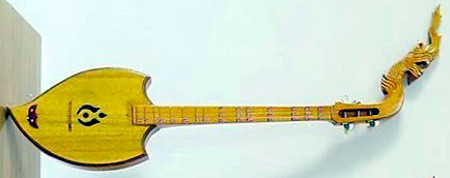
Phin
Alternative names: Pin, Pinn
Origin: Thailand and Laos.
Tuning: A3, E4, A4 or A3, D4, A4.
Strings/Courses: 3/3
Further notes:
Scale Length: 500-600mm

Phin Pia
Alternative names: Phin Pya, Pia, Phia,
Origin: Nothern Thailand, 12th century.
Tuning:
Strings/Courses: 2/2
Further notes: Traditionally silk strings, nowadays often steel strings.
Scale Length:
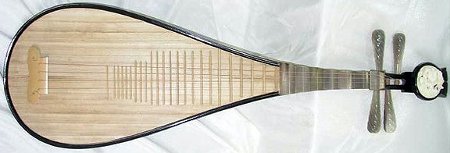
Pipa
Alternative names:
Origin: China during the Qin Dynasty (221 - 206 BCE).
Tuning: A2, D3, E3, A3
Strings/Courses: 4/4
Further notes: Nylon or silk strings.
Scale Length: 725mm

Pondar
Alternative names: Ponder, Pandir, Pandur, Dechig pondur, Adkhoku pondur, Dakhch pandr, Merz ponder.
Origin: Chechnya, Southern Russia.
Tuning: C, D, G.
Strings/Courses: Usually 3/3, sometimes 6/3
Further notes: Steel strings.
Scale Length:
Portuguese Guitar
- See Guitarra Portugesa
Prim
- See Bisernica

Psalmodikon
Alternative names: Psalmodicon, Salmodikon, Manikarka, Salmedunken, Moldpill, Mollpill
Origin: Denmark, around 1820.
Tuning: No standard
Strings/Courses: 1/1 or sometimes 2/1.
Further notes: It was developed for use in churches that could not afford organs. Other instruments were not considered suitable for churches. It was also designed to take up little space and be playable by those who could not read music. They are usually box-shaped, although other shapes also exist.
Scale Length: No standard.
Puerto Rican Cuatro
- See Cuatro Puertorriqueno.
Q

Qinqin
Alternative names: Chinchin, Meihuaqin
Origin: China
Tuning: G3, D4, A5
Strings/Courses: 3/3
Further notes: Nylon or silk strings.
Scale Length: 400-600mm

Qopuz
Alternative names: Gopuz, Ghopoz, Chogur, Choqur, Azeri Saz, Ashiq Saz
Origin: Azerbaijan
Tuning: D4 D4 D4, G3 G3 G3, C4 C4 C4
Strings/Courses: 9/3, 8/3, 7/3 or 6/3
Further notes: Steel strings. The names 'Azeri Saz' and 'Ashiq Saz' are comparisons to the Turkish Saz, from which this instrument is believed to have originated. It is much deeper than the Turkish Saz, however. 'Ashiq' is a traditional style of music commonly featuring this instrument.
Scale Length: 750mm
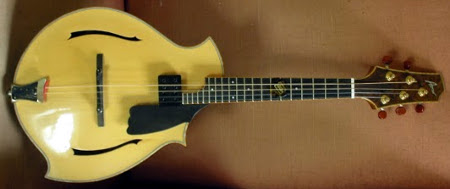
Quintola
Alternative names: Mandele, 5 string mandolin.
Origin: First invented as a purely electric instrument, now acoustic models are also made.
Tuning: C3, G3, D4, A4, E5.
Strings/Courses: 5/5
Further notes:Steel strings.
Scale Length: Around 350mm, often slightly longer than a standard mandolin. Sometimes they have fanned frets, too.
R
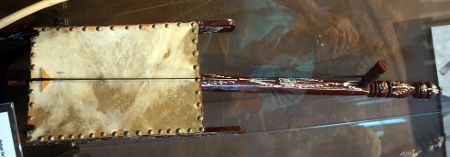
Rababah
Alternative names: Rabab, Rababa
Origin: Played by the Bedouin peoples in the Sahara, Africa.
Tuning: No Standard
Strings/Courses: 1/1
Further notes:
Scale Length:
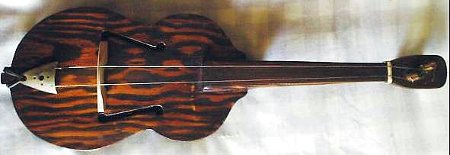
Rabel
Alternative names:
Origin: Spain. Evolved from the medieval Rebec, which was popular throughout medieval Europe.
Tuning:
Strings/Courses: 2/2 or 3/3
Further notes:
Scale Length: Often quite a wide variation as they are made by local luthiers on a small scale.
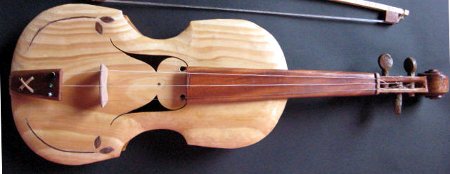
Rabeca
Alternative names: Rabeca chuleira, Rabela, Chula
Origin: North-eastern Brazil. Evolved from the rebec and the rabel taken to the new world by Portuguese invaders and missionaries.
Tuning: Tuned in either fourths or fifths.
Strings/Courses: usually 3/3, but sometimes 4/4
Further notes:
Scale Length: Often quite a wide variation as they are made by local luthiers on a small scale.
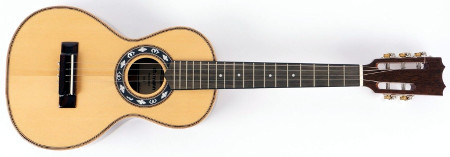
Rajao
Alternative names:
Origin: Madeira, Portugal.
Tuning: D4, G4, C4, E4, A4
Strings/Courses: 5/5 or 6/5
Further notes: Sometimes the top string is doubled. Steel strings.
Scale Length: 425mm

Ramkie
Alternative names: Afri-can, Kitaar
Origin: South Africa
Tuning: Usually either standard Guitar tuning or an open tuning. No standard due to their homemade nature.
Strings/Courses:
Further notes: Nylon, fishing wire, steel or cable strings.
Scale Length: No standard due to the wide variety in sizes.

Ravanhatha
Alternative names: Ravanhatta, Ravanastron, Ravana Hasta Veena.
Origin: Western India.
Tuning:
Strings/Courses:
Further notes:
Scale Length:

Rawap
Alternative names: Kashgar Rebab, Ravap,
Origin: Xinjiang, Western China and eastern parts of Tajikistan and Kyrgyzstan.
Tuning:
Strings/Courses: 5/3
Further notes: The two highest courses are doubled and the lowest is single. Steel strings.
Scale Length: 700mm
Requinto guitar
- See Guitar, Requinto.
Requinto jarocho
- See Jarana Jarocha Requinto.

Rebab
Alternative names: Rubab, Robab, Rubob, Kabuli Rebab, Ryborb, "the lion of the instruments" (in Afghnistan).
Origin: Ancient Persia (now Iran) or Afghanistan, 7th century.
Tuning: No absolute pitch, but the 3 stringed versions are tuned in fourths.
Strings/Courses: 3/3, 4/4 or 6/6
Further notes: 3-6 strings and 11 or 12 sympathetic strings.
Scale Length: 600-650mm

Rebab (Indonesian)
Alternative names:
Origin: Indonesia
Tuning: Between C#3, G#3 and D3, A3. Tuned to the Gamelan orchestra it is played with.
Strings/Courses: 2/2
Further notes: Related to the Kemenche and Rubab. Probably brought to Indonesia by Muslim explorers.
Scale Length:
Requinto
- See Guitar, Requinto.
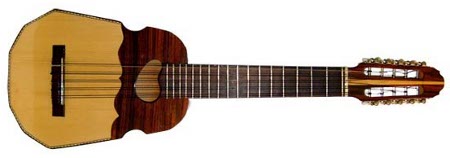
Ronroco
Alternative names: Ronrroco, Ronrojo
Origin: Andean mountains, South America.
Tuning: G3 G3, C3 C3, E4 E3, A3 A3, E4 E4 (Standard tuning) or G3 G2, C3 C2, E4 E3, A3 A3, E4 E4 (Lowest two courses also in octaves) or D4 D4, G4 G4, B4 B3, E4 E4, B4 B4 (Bolivian tuning)
Strings/Courses: 10/5
Further notes: Nylon strings.
Scale Length: 485-500mm
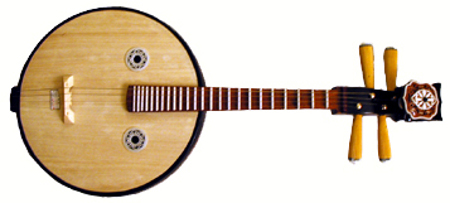
Ruan
Alternative names: Ruanxian, Zhongruan
Origin: China during the Qin Dynasty (221 BC - 206 BC)
Tuning: G2, D3, G3, D4
Strings/Courses: 4/4
Further notes: Steel strings.
Scale Length: 425mm
Russian Guitar
- See Guitar, Russian.